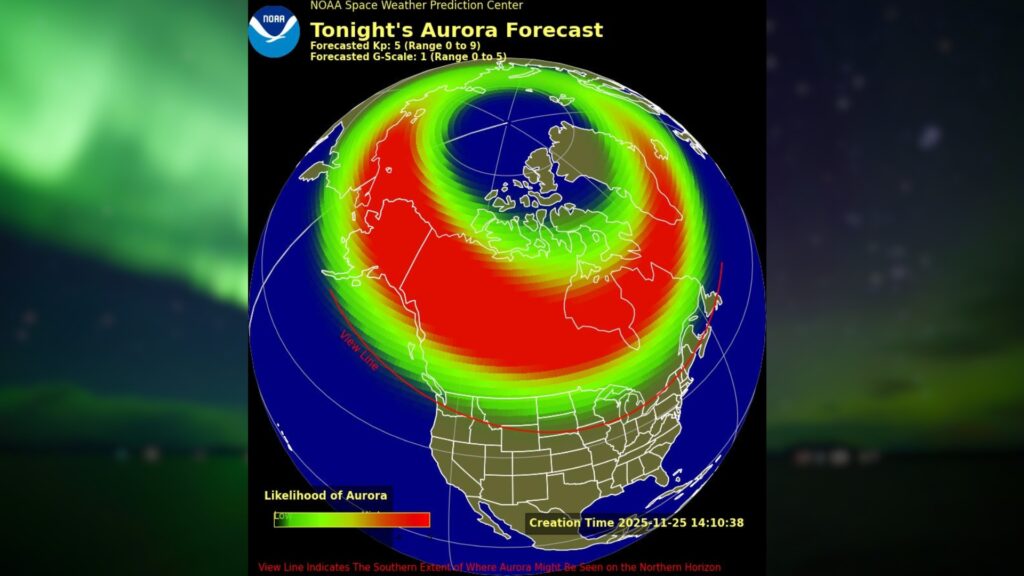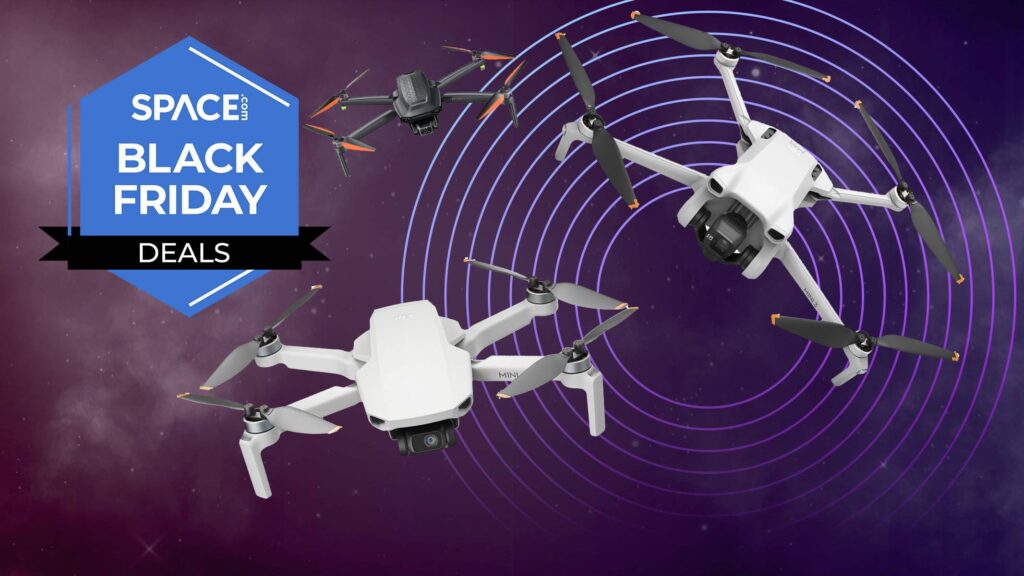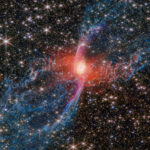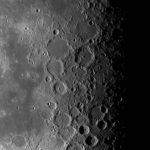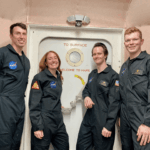Now Reading: New video takes you into the cockpit for 1st flight of NASA’s new X-59 ‘quiet’ supersonic jet
-
01
New video takes you into the cockpit for 1st flight of NASA’s new X-59 ‘quiet’ supersonic jet
New video takes you into the cockpit for 1st flight of NASA’s new X-59 ‘quiet’ supersonic jet
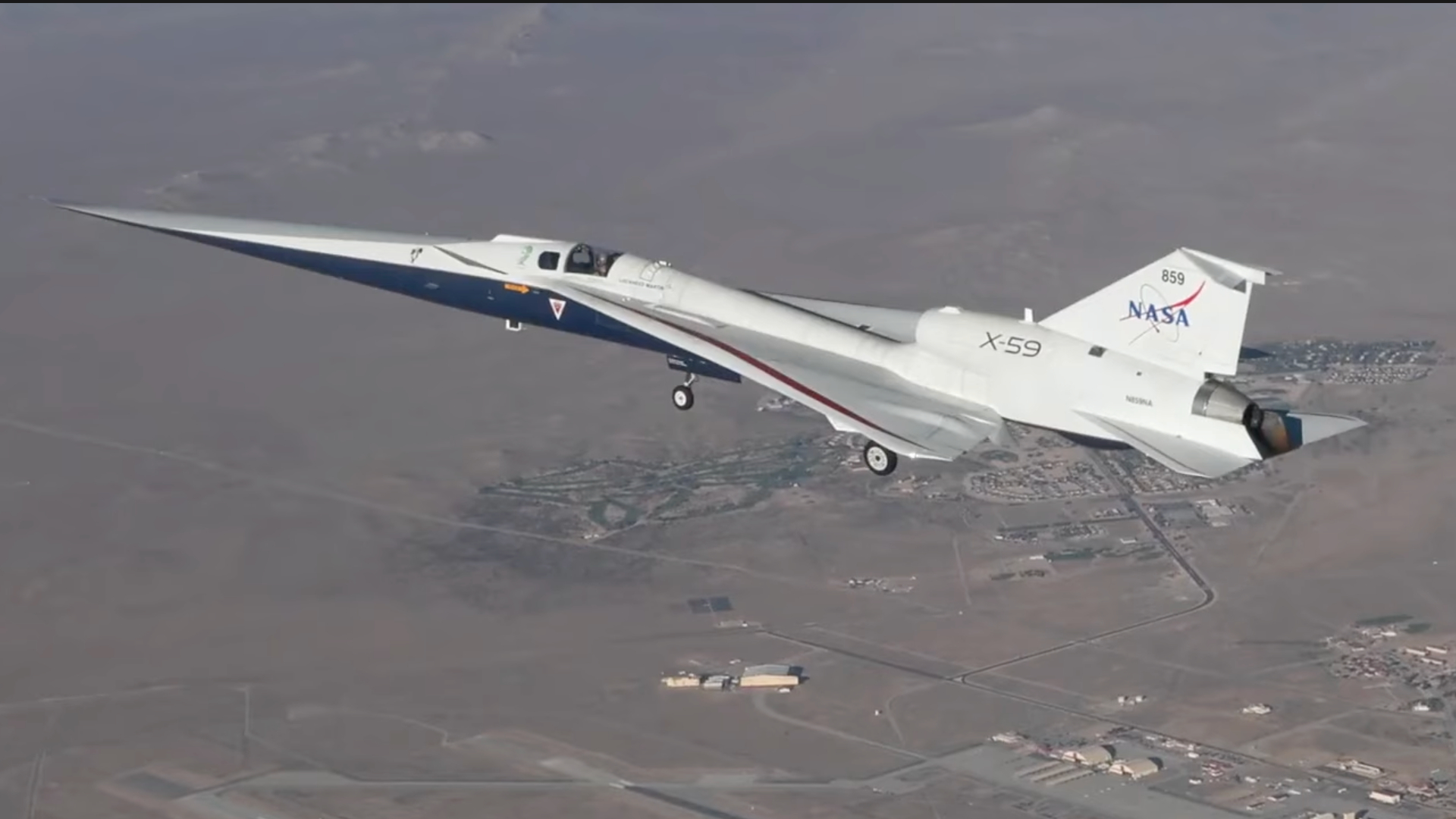
A new video gives us great looks at last month’s historic first flight of NASA’s new “quiet” X-59 supersonic jet.
NASA plans to use the X-59, an experimental vehicle, to fly faster than the speed of sound without generating sonic booms. The video was taken during the X-59’s first flight on Oct. 28, which took off from Palmdale Regional Airport in California — on a runway shared by the airport and the adjacent U.S. Air Force (USAF) Plant 42 facility.
The video shows the X-59’s extra-long nose gently bouncing as it taxis out of its shelter and heads toward at its runway in the orange-lit Mojave Desert. Combining views from the cockpit, a mission control area and from chase planes, the video brings views from takeoff, flight and touchdown — and the moment when NASA lead X-59 test pilot Nils Larson emerges from the cockpit to greet well-wishers. (Keep watching for a little surprise and humor near the end of the video.)

The X-59 is a collaboration between NASA and aerospace giant Lockheed Martin’s historic Skunk Works facility in Palmdale. The debut flight went “exactly as planned,” Lockheed representatives said in a statement published at the time of the flight. (The U.S. government was in shutdown when the flight happened, but certain critical activities were granted an exemption.)
“X-59 is a symbol of American ingenuity. The American spirit knows no bounds. It’s part of our DNA — the desire to go farther, faster, and even quieter than anyone has ever gone before,” Acting NASA Administrator Sean Duffy said in the same statement. “This work sustains America’s place as the leader in aviation, and has the potential to change the way the public flies.”

Work on the X-59 will continue at NASA’s Armstrong Flight Research Center, which is also at Palmdale. The jet is expected to continue testing through flights over microphones sprinkled around Mojave to measure the vibrations generated. Other aircraft will also measure its shockwaves using air sensors.
Supersonic flights above land in the U.S. have been prohibited since 1973, but if the X-59 can prove out its promises, it may help make commercial supersonic flight possible. Faster air travel would in turn generate a lift not only for commercial travelers but also for transport in case of medical emergency, disaster or military need.
Support for such speed comes directly from the White House, too, as President Donald Trump issued an executive order earlier this year directing the Federal Aviation Administration to examine how to lift the restrictions on U.S. supersonic flight.
Lockheed Martin and NASA aren’t the only entities trying to make supersonic flight routine. Boom Supersonic’s XB-1 jet made its own historic flight in January, also breaking the sound barrier over Mojave. The milestone marked the first time an independently developed commercial aircraft achieved such a milestone over the continental United States.
Stay Informed With the Latest & Most Important News
-
 012024 in Review: Highlights from NASA in Silicon Valley
012024 in Review: Highlights from NASA in Silicon Valley -
 02Panasonic Leica Summilux DG 15mm f/1.7 ASPH review
02Panasonic Leica Summilux DG 15mm f/1.7 ASPH review -
 03How New NASA, India Earth Satellite NISAR Will See Earth
03How New NASA, India Earth Satellite NISAR Will See Earth -
 04And Thus Begins A New Year For Life On Earth
04And Thus Begins A New Year For Life On Earth -
 05Astronomy Activation Ambassadors: A New Era
05Astronomy Activation Ambassadors: A New Era -
06SpaceX launch surge helps set new global launch record in 2024
-
 07Space Force plans new ‘Futures Command’ amid pressure to speed up modernization
07Space Force plans new ‘Futures Command’ amid pressure to speed up modernization












